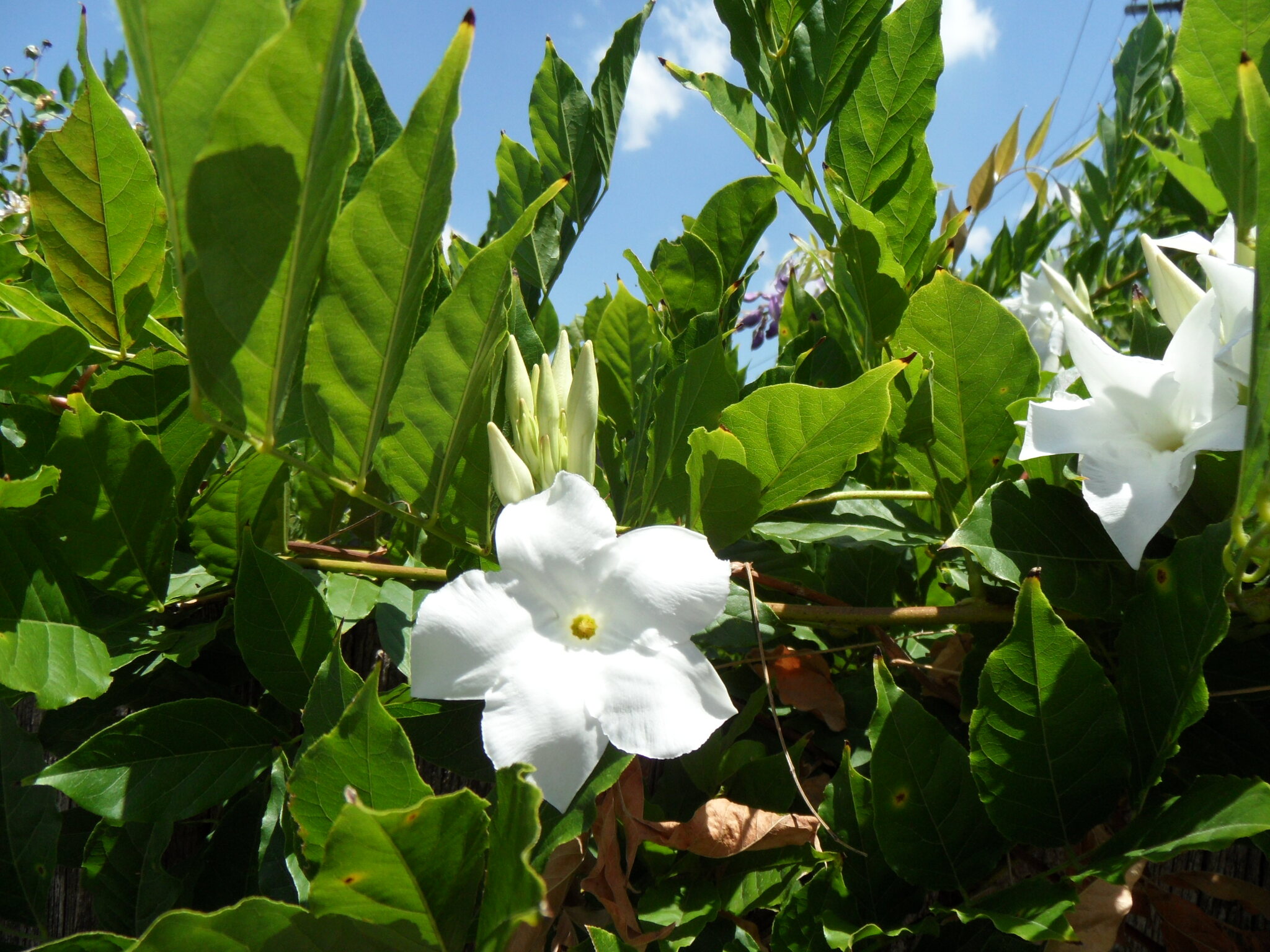
Commemorating Henry Mandeville (1773–1861), British Government Minister in Buenos Aires who introduced several plants to English cultivation.
Subshrubs or lianas, deciduous or evergreen; latex white. Stems wiry to woody, without spines. Leaves opposite (rarely 4-whorled), stalked; blade well developed; colleters present at base. Inflorescence terminal or axillary, racemose. Flowers scented, stalked. Corolla funnel-shaped; tube cylindrical, narrowed towards base; lobes convolute in bud, overlapping to the right. Corolline corona absent. Stamens enclosed, attached at base of the expanded throat, converging around style head. Disk comprising 2-5 fleshy, basally fused segments. Fruit a pair of follicles, of separate carpels, dehiscent along adaxial suture. Seeds numerous, narrow, flattened, not winged, with hair tufts.
Several species and cultivars are commonly grown as flowering pot plants or garden climbers.
Frost sensitive.
Cuttings or occasionally seeds.
Scandent subshrubs or lianas, corolla funnel-shaped, with lobes overlapping to the right in bud.
About 130 species in C and S America, with 1 occasionally naturalised in NE NSW.
Woodson (1933), Williams (1996).
Source: (2002). Apocynaceae. In: . Horticultural Flora of South-eastern Australia. Volume 4. Flowering plants. Dicotyledons. Part 3. The identification of garden and cultivated plants. University of New South Wales Press.
